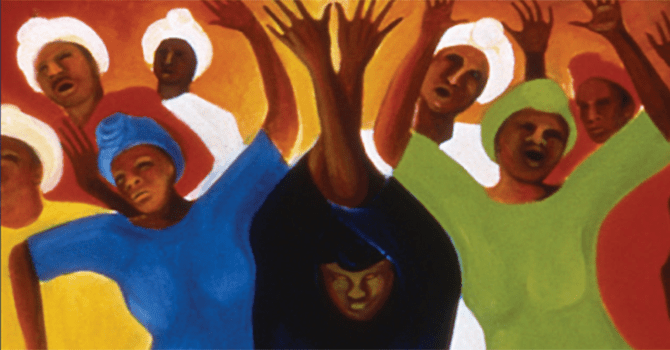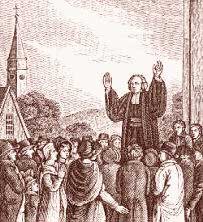
The Great Awakening was a period of the revival of the Christian religion in the American colonies which started around 1740. Over 100 hundred years after Africans arrived in North America, around 1619, did the Great Awakening take place. As enslaved Africans began to practice Christianity, they maintained African traditions and musical styles within their worship. The Black Church today takes Christianity and its practices very seriously as a result of The Great Awakening period when Africans clung to the “good news” as a source of refugee from their oppression.
Initially, before the Great Awakening, enslaved Africans were hesitant to convert to Christianity for multiple reasons:
It should be noted that may slaves owners used Christianity against slaves into order to fulfill their own self serving prophecies that justify owning and abusing slaves, which may have also deterred slaves from accepting Christianity all together.
According to ushistory.org, George Whitefield– a minister from Britain toured colonies along the east coast to preach the gospel to anyone who would listen. Whitefield was an actor and he would display his talents during his sermons, by “shout[ing] the word of God, weep[ing] with sorrow, and tremble[ing] with passion.” In addition, Whitefield spread the gospel to slaves and Native Americans who were interested in converting to Christianity. The expressive sermons from Whitefield, in addition to emphasis of testimonial experiences began mass conversion amongst the enslaved Africans.

The ways which slaves expressed themselves were always based on what they deemed most meaningful to themselves. Slaves risked their lives to engage in personal Christian worship without the presence of white people. Their risk taking for worship was personal and powerful. Spirituals, dance, and community singing are still very popular methods of worship that can be found in Black churches today which reflects our ability to reclaim the white narrative that was forced upon us and instead proudly present attributes that are specific to black and African cultures.
Spirituals were often accompanied by hand clapping and stomping which complimented the melodic singing. The clapping and stomping is reminiscent of the djembe and produces a similar timbre that is consistent with African style of music.
The dance that was common in worship was called “Ring Shout.” Members of worship would gather in a circle at the center of the performance and began moving in a counterclockwise shuffling motion while spirituals were sung by other members.
The call-response technique was a major part of community worship which allowed everyone an opportunity to engage with the service.
The Great Awakening, mass Christian conversion during the 18th century, seemed to be a time period where enslaved Africans embraced religion as a coping mechanism that helped them to persevere through very difficult times. As enslaved Africans converted to Christianity through the influence of white preachers like George Whitefield, they found ways to integrate their African traditions into their worship to make their experience more personal and meaningful. Through spirituals, community singing, and dance enslaved Africans were able to express themselves while simultaneously establishing their influence on Christianity as it is known in the Black church today.

Login to your account